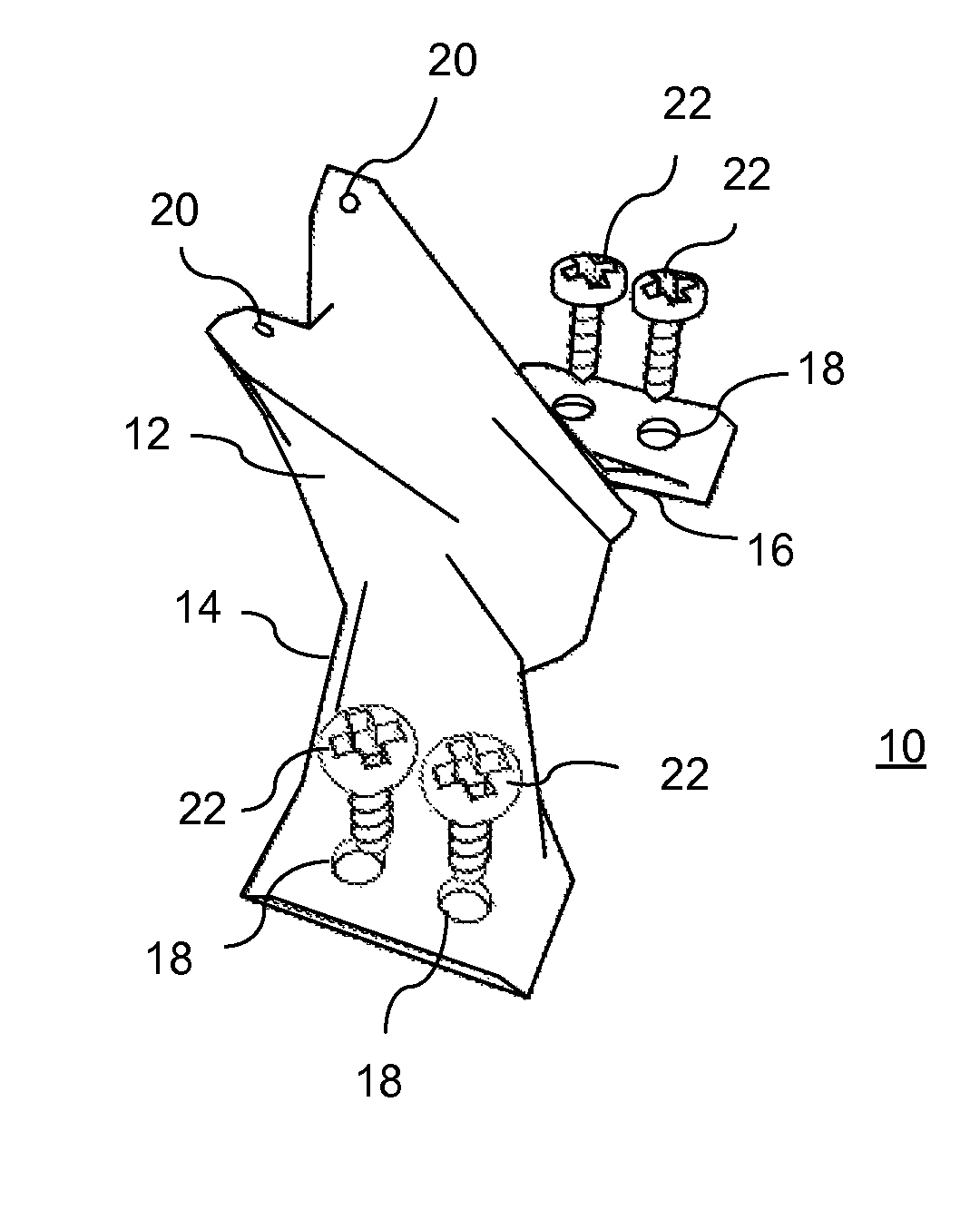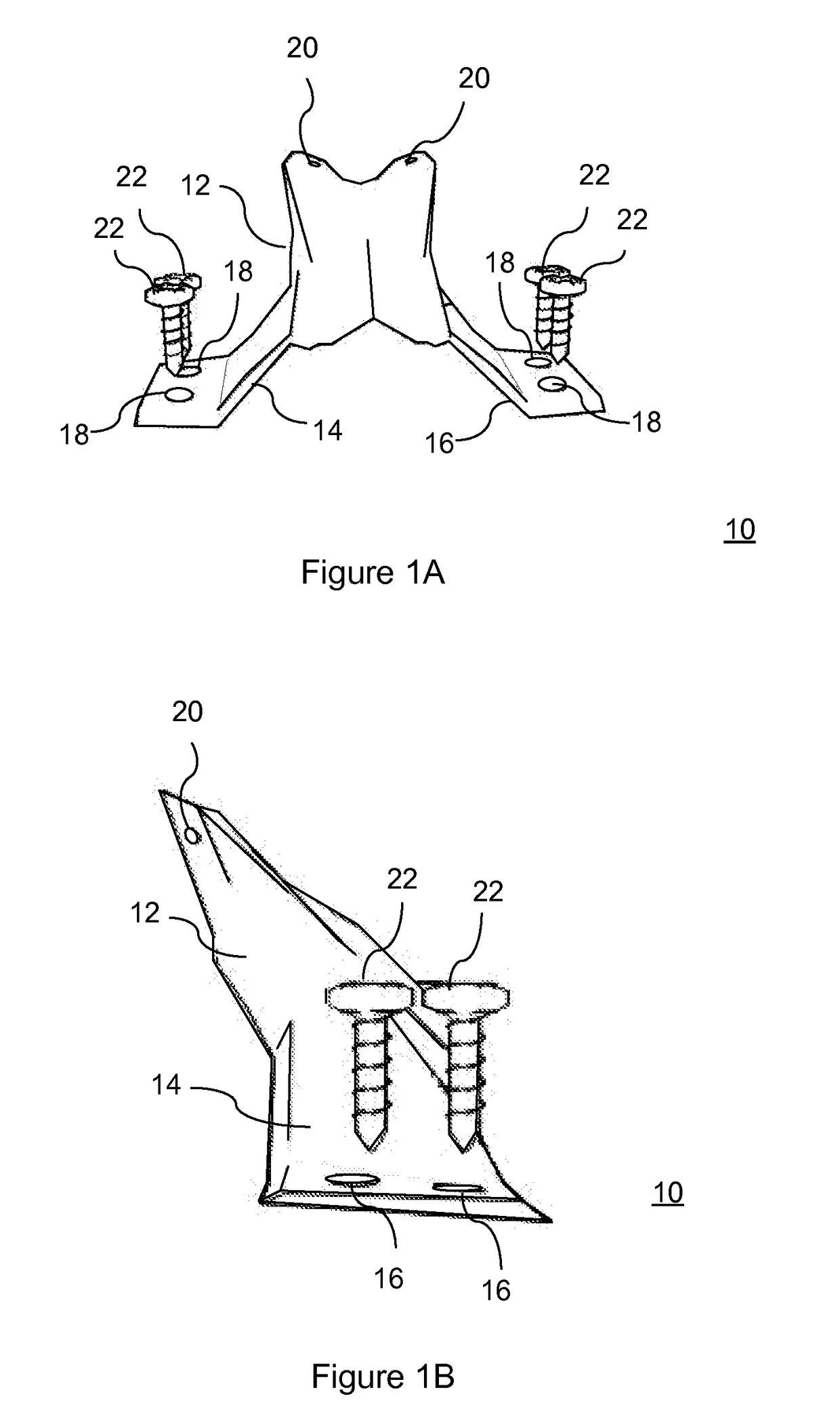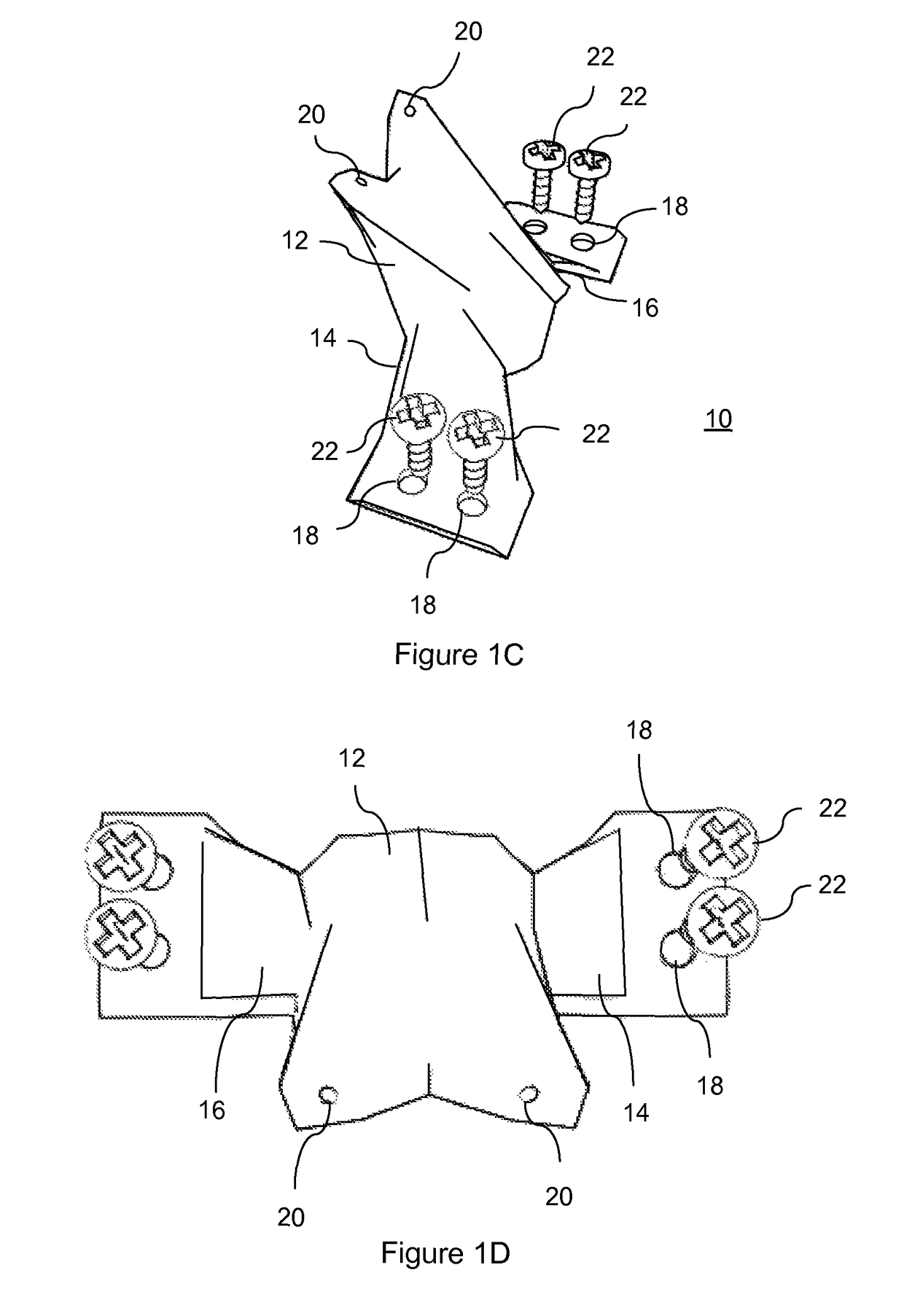Total artificial spino-laminar prosthetic replacement
a total artificial and laminar technology, applied in the field of total artificial spinous process (spino)laminar prosthesis, can solve the problems of increased risk of neurovascular complications, short and/or long term deformity and/or kyphosis, cumbersome techniques, etc., and achieve the effect of restoring strength and structural integrity
- Summary
- Abstract
- Description
- Claims
- Application Information
AI Technical Summary
Benefits of technology
Problems solved by technology
Method used
Image
Examples
Embodiment Construction
[0104]The present invention now is described more fully hereinafter with reference to the accompanying drawings, in which embodiments of the invention are shown. This invention may, however, be embodied in many different forms and should not be construed as limited to the embodiments set forth herein; rather, these embodiments are provided so that this disclosure will be thorough and complete, and will fully convey the scope of the invention to those skilled in the art.
[0105]Referring now to the drawings, FIGS. 1-12B illustrate exemplary embodiments of a TASP-LP that can solve the aforementioned problems in the cervical, thoracic and lumbar spine by implantation of a TASP-LP into the post-laminectomy spine.
[0106]FIGS. 1A-D illustrate a plurality of different views of an exemplary embodiment of a cervical TASP-LP (Embodiment IA) including a single one piece total prosthetic module 10 that can replace a single natural cervical spinous process laminar (left and right) unit.
[0107]The to...
PUM
 Login to View More
Login to View More Abstract
Description
Claims
Application Information
 Login to View More
Login to View More - R&D
- Intellectual Property
- Life Sciences
- Materials
- Tech Scout
- Unparalleled Data Quality
- Higher Quality Content
- 60% Fewer Hallucinations
Browse by: Latest US Patents, China's latest patents, Technical Efficacy Thesaurus, Application Domain, Technology Topic, Popular Technical Reports.
© 2025 PatSnap. All rights reserved.Legal|Privacy policy|Modern Slavery Act Transparency Statement|Sitemap|About US| Contact US: help@patsnap.com



